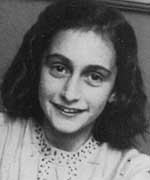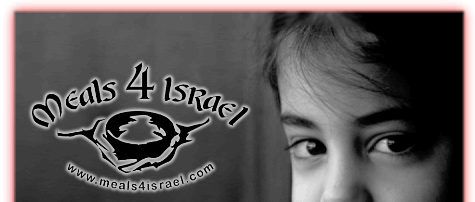|
Creating Judaic Hand Weaved Tallit Jewish Prayer Shawls In Israel
The Torah commands all Jewish people to wear tzitzit (fringes) at the corners of our clothes as a reminder of the mitzvot. There is a complex procedure for tying the knots of the tzitzit, filled with religious and numerological significance. The mitzvah to wear tzitzit only applies to four-cornered garments, which were common in biblical times but are not common anymore. To fulfill this mitzvah, adult men wear a four-cornered shawl called a tallit during morning services. In some Orthodox congregations, only married men wear a tallit; in others, both married and unmarried men wear one. "In Conservative, Reform and Reconstructionist synagogues, both men and women may wear a tallit, but men are somewhat more likely than women to do so," says Carine Kleiman. "Strictly observant Jewish men commonly wear a special four-cornered garment, similar to a poncho, called a tallit katan ("little tallit"), so that they will have the opportunity to fulfill this important mitzvah all day long. The tallit katan is worn under the shirt, with the tzitzit hanging out so they can be seen." There is no particular religious significance to the tallit (prayer shawl) itself, other than the fact that it holds the tzitzit (fringes) on its corners. There are also very few religious requirements with regard to the design of the tallit. The tallit must be long enough to be worn over the shoulders (as a Jewish prayer shawl), not just around the neck (as a scarf), to fulfill the requirement that the tzitzit be on a "garment." It may be made of any material, but must not be made of a combination of wool and linen, because that combination is forbidden on any clothing. Most tallitot Jewish prayer shawls are white with navy or black stripes along the shorter ends. These Jewish prayer shawls also commonly have an artistic motif of some kind along the top long end (the part that goes against your neck). This motif is referred to as an atarah (crown). There is no particular religious significance to the atarah; it simply tells you which end is up! It is quite common, however, to write the words of the blessing for putting on the tallit on the atarah, so you can read the blessing while you are putting the tallit on. "If a blessing is written on your Jewish tallit, you should be careful not to bring the tallit into the bathroom with you," says Carine Kleiman. "Sacred writings should not be brought into the bathroom. For this reason, many synagogues in Israel, the US, Europe and throughout the world have a tallit rack outside of the bathroom. Conversely, if you see a room in a synagogue with a sign that tells you to remove your tallit before entering, you can safely assume that the room is a bathroom!"
In the middle of the 1980's when Carine was busy weaving tapestries an opportunity arose through an acquaintance of her fathers, Roget Kahn, who started hand weaving Jewish prayer shawls in his basement. Roget began the slow process of changing the customary concepts that prayer shawls in Synagogues had to be machine made in black and white. Roget Kahn offered to retrain Carine to weave tallitot on his flying shuttle loom. Once trained, Carine originally continued some of the Roget Kahn's original designs, the most unusual design being the Bnai Or, multi-colored striped tallit, based on the kabbalistic interpretation of the Creation. The novelty of seeing a colorful tallit made this design a best seller and within a very short time, Carine was creating her own designs and selling her collections. Her name and reputation spread quickly so that many customers approached her for their own individual design and colors. Carine
weaves three sizes from a small shawl size (32") which
lies across the shoulders to the standard (48") and Large
sizes (53") which allow you to flip the tallit corners
over the shoulders. Today, members of the Orthodox, Conservative,
Reform and Reconstructionist Jewish movements choose from all
the three sizes. Tallit designs range from muti-color to simple plain white and white which is made possible by spinning off white (ecru) wool. Other tallit designs come in a single weave mode which create pastel light colors to double weave where the colors are sharper and bolder. A more traditional tallit design is usually based on stripes. Less traditional designs are created from grading colors in blues, grays or lavender shades. Carine takes unusual special customer requests in her stride such as a tallit based on the Princeton colors ( black and orange) a tallit based on the colors of a UK football team (blue and yellow) and a tallit with colors of the Grand Canyon! Carine's 20 plus years investment in hand weaving Jewish prayer shawls has not only changed the concept that the only option for a Jewish prayer shawl is a machine made black and white tallit but has raised the awareness amongst prayer shawl wearers that colorful options are possible. Perhaps Carine's greatest achievement is establishing a choice for women's Jewish prayer shawls. The full circle of sophistication in her work is a customer's request for a tallit with black stripes. The only difference being is that it is beautifully hand woven. Together with a request for her simple elegant hand spun hand woven white and white tallit. Carine Kleiman's Judaic hand woven tallitot customers come from all over the world: Israel, USA, Canada, Hawaii, Australia, New Zealand, Hong Kong, South Africa, France, Italy, Germany, Sweden, Mexico and South America. Apart from weaving hand woven tallitot Jewish prayer shawls in Israel, Carine also creates designs for Synagogue interiors including Ark curtains, Chuppas and Torah mantles. Carine has received many compliments from all over the world on her creative, hand woven tallitot Jewish prayer shawls made in Jerusalem, Israel. "Thank
you for taking such good care of me," says LyneRose of
Aptos, California. "Again, my tallit is phenomenal and
I thank you and your wife for her artistry." "Carine
Kleiman is no mere weaver," says Rabbi Leon Waldman of
Fairfield, Connecticut. "She is a fantastically gifted
artist. Her tallitot are striking in design, each individually
crafted, and the colors are magnificent. At my Jewish congregation
in Fairfield Connecticut, there are close to one hundred Kleiman
(Shizre Kodesh) tallitot creating the effect of a sea of vibrant
color, reminiscent of a Monet."
Sponsored by IsraelPr.com |





